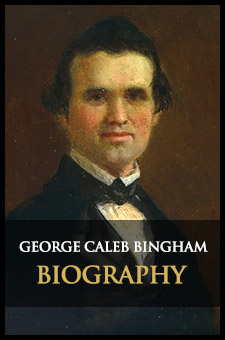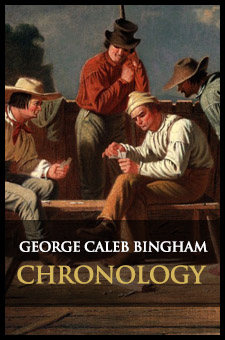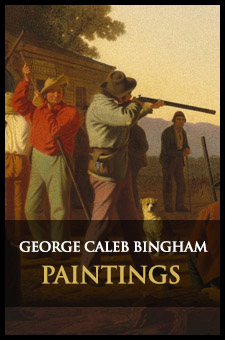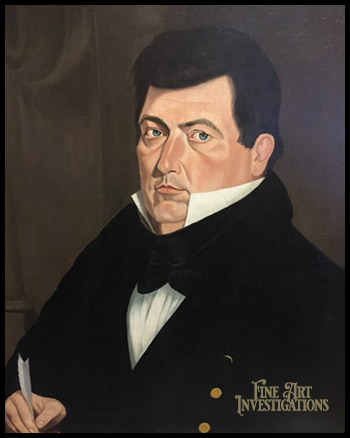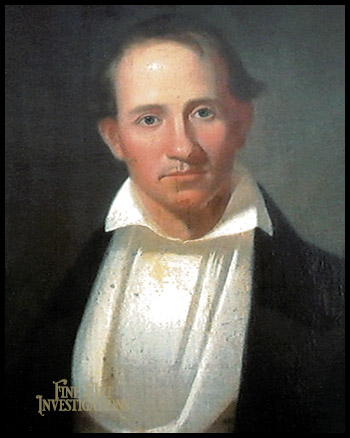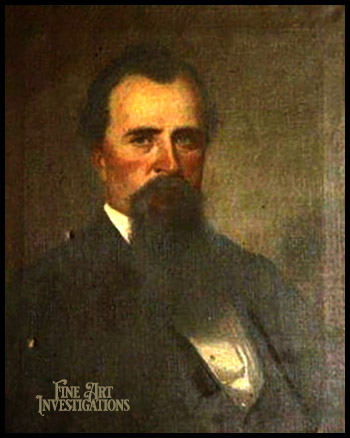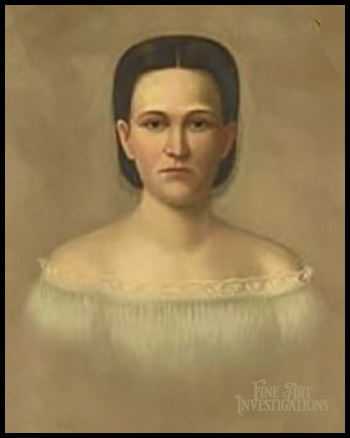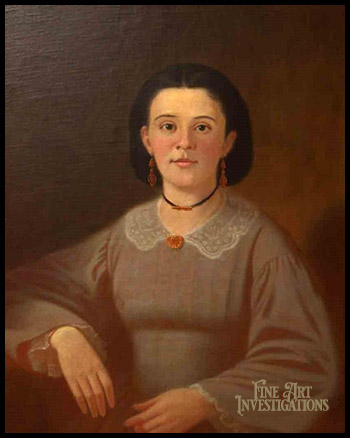Rediscovered Portraits
More than 40 possible new Bingham portraits have been brought to the attention of Fine Art Investigations. Bingham’s name so dominated portraiture at the heart of the nation that memory of other artists was nearly obliterated. Even those attributed to Bingham by family tradition sometimes prove to be ones by his colleagues or students. With re-discovered George Caleb Bingham portraits, the emphasis of Fine Art Investigations is not on quantity, but on quality. Fine Art Investigations’ replicable authentication research includes:
- Provenance
- Date of execution has been determined to ensure artist and subject were in the same place at the time
- Agreement by other Bingham experts
- Examination by conservator whenever possible
Scroll down to see the hand of the same artist in all the images. Even as his technique matured, George Caleb Bingham’s distinctive style is visible. Links above each of the images provide detailed information.
J.S. Rollins
ca, 1855-1856
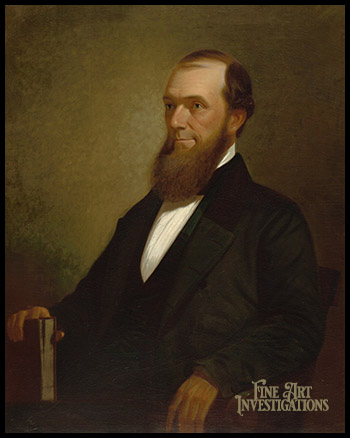
George Caleb Bingham
Major James Sidney Rollins, 1855-6
oil on canvas, 53 x 45 inches
McClain Collection, Independence, Missouri
The Dunnicas
ca. 1837
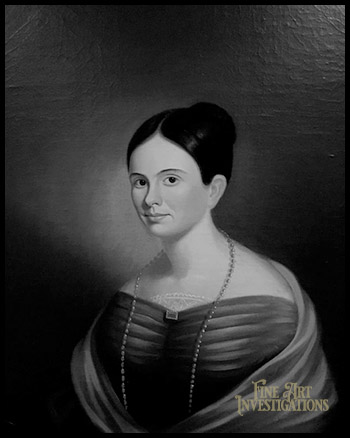
George Caleb Bingham
Martha Jane Shackelford (Mrs William Franklin Dunnica)
ca. 1837
Three posthumous, post-Civil War portraits based on photographs initially appeared not to be by George Caleb Bingham but extensive analysis and research proved that Bingham was indeed the artist. The photographs do not do them justice. The hand of the master is present even in the tiniest brushstrokes. The families of Julia George and Louisa Watkins lived literally only a few blocks from Bingham’s Kansas City, Missouri studio. All three have been personally examined by Bingham experts who agree with the attributions
Three factors contributed to the atypical look of these three Bingham portraits.
- All three women were dead. Instead painting from a living model or a recent memory, Bingham had to rely on daguerreotypes or photographs. He may have met Sallie Neal briefly. He may have seen Louisa Watkins in the neighborhood or at social gatherings. He probably had not seen Julia George since she was a child.
- Bingham was depressed. Like so many others, events of the Civil War had shaken the artist. His only living son, Horace, disappeared on his way to California and was never seen again. All three women died tragically. Instead of the psychological engagement that typifies the best Bingham portraits, there is a pervasive sadness pervades.
Despite the obstacles, George Caleb Bingham provided the grieving families with well-rendered keepsakes to help them keep their loved one alive in memory.

